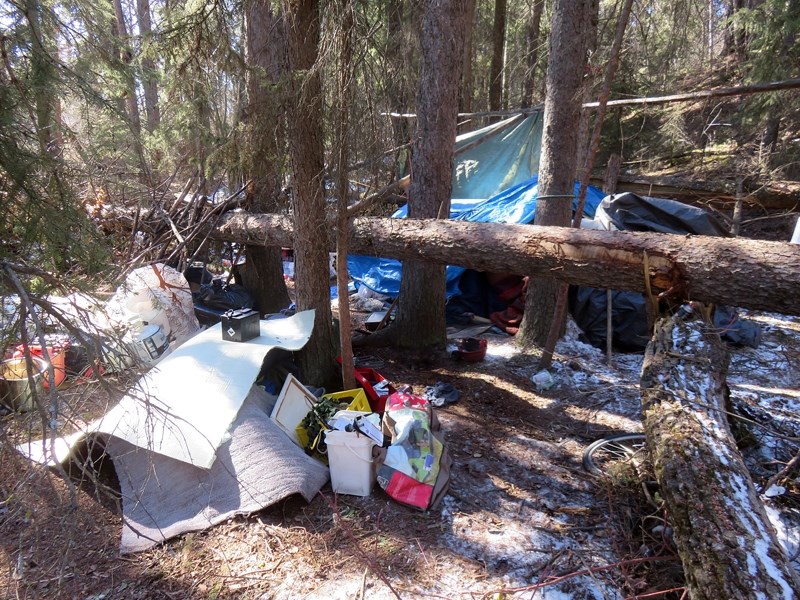Red Deer County's homeless issue is a “continuous” problematic social dilemma that must be resolved beyond using enforcement, says a senior peace officer with the rural municipality's protective services department.
“The root of this problem goes way beyond enforcement,” said Irv Heide, a retired RCMP member who joined the county department last January and manages the seven-member peace officer team and reports to the county's director of community protective services. “There's way more to this problem.
“Even if there was a bylaw in place and gave us the tool to enforce or lay a charge, they are not going to go to jail because they violated the bylaw, unless it progressed into something else. Again, you have to dig way deeper than enforcement to fix the problem,” said Heide, adding he would like to see all community stakeholders come together to find a workable solution.
“If they are genuinely interested in resolving this issue, yes, all stakeholders need to come together, in my opinion.”
The county's homeless issue garnered widespread public attention in 2015 when the province was forced to remove the so-called tent city inhabited by transients on county land just south of the City of Red Deer between the lanes of Highway 2.
Earlier this year the county responded to the issue by publishing a “Displaced Persons” article in its municipal newsletter, conceding there was a “significant” increase in public complaints – 18 within a six-month period -- of displaced people.
“Understandably, county residents are becoming increasingly frustrated and worried about the unlawful campsites either on their property or next door,” said the article.
Heide said the removal of the tent city only resulted in the chronically homeless moving on to new well-sheltered locations around Gasoline Alley or close to the southern end of City of Red Deer borders, where transients will “flip-flop” across Highway 2A or even between Highway 2. These alternative locations will see new tents and tarps set up in squalid conditions, often with evidence of stolen property and hard drug and alcohol use. He said some camps that have been discovered have had up to 15 to 20 propane tanks used to keep the occupants warm.
“It is ongoing. It is a case-to-case issue,” said Heide, adding the impoverished lifestyle of the occupants is one of choice, and not necessarily due to financial hardship.
“I have yet to meet somebody who was displaced in the County of Red Deer because of the downturn in the economy,” he said. “In my experience and opinion they are there because they want to be left alone, and they don't want to be accountable.
“I think there is a huge misperception from the general public,” added Heide of the lack of understanding of the truths behind the issue. “The only way to confirm that is by actually walking into these camps and meeting these people and seeing what they are doing, how they are living and having a discussion with them if they are willing to talk to you.”
In the meantime, illegal camping by the transients continues to go on in both private and public lands. Heide said county peace officers will probe complaints from landowners, but added illegal activities, other than trespassing, are police matters.
“We bring it to their (RCMP) attention and whether they investigate or not is up to them,” said Heide, whose office is limited to only “displacing” homeless people by simply ordering them to vacate private or public property through the enforcement of the Petty Trespassing Act, a provincial law that only legislates fines against violators, who in the county may not have the means to financially comply due to their chronically impoverished circumstances.
In the meantime, the Displaced Persons article also offered several suggestions, including ones on signage and security, to county residents if they come across evidence of a homeless camp on their property.
Citizens who come across an unwanted and troublesome displaced person or camp on their properties are encouraged to contact the county's patrol number at 403-343-6301.



